PSV Packaged Systems
Particle Shadow Velocimetry Packaged System
LED System Provides Superior Safety at an Educational Price
Cost and safety issues associated with laser-based particle image velocimetry systems effectively eliminate their use in undergraduate student training. ISSI has developed a cost-effective alternative, Particle Shadow Velocimetry (PSV), illustrated below:
PSV uses light extinction (particle shadows) rather than light scattering in a laser sheet, resulting in high-quality particle imaging at much lower illumination levels. These safe illumination levels can be generated by a pulsed-LED system at a fraction of the cost of a pulsed laser. Multi-color LED illumination permits the use of a low-speed camera, further reducing system cost. Different color LEDs are sequentially pulsed, at high speed, and the sequential particle images are captured in a single frame on the camera’s three color planes. Narrow depth-of-field optics are employed to image a two-dimensional plane within the flow volume, similar to what is achieved with a laser sheet. Measurement close to surfaces is possible because the system is not degraded by surface reflections which severely limit laser-based systems. The PSV approach is fully compatible with the seeding approaches and specifications used with conventional PIV systems.
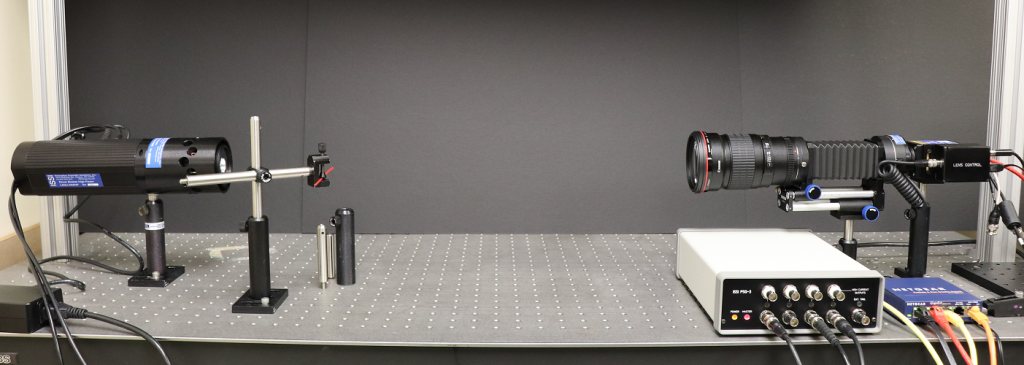
System Components
ISSI CCD Color Camera
(Product ID: PSP-CCD-C)
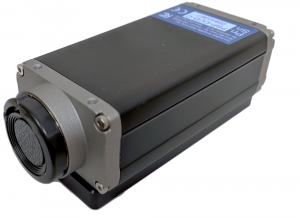 The PSP-CCD is a 2-megapixel CCD camera used for pressure sensitive paint data acquisition. The camera is small and lightweight allowing for an array of cameras to be mounted in a tight place for larger scale models and applications. Communication with the PSP-CCD is via Gigabit Ethernet. The camera comes in two options, one a color sensor and one a monochrome sensor. The color camera is used in Binary PSP and particle shadow velocimetry applications whereas the monochrome version is used in monochrome PSP or surface stress sensitive film applications.
The PSP-CCD is a 2-megapixel CCD camera used for pressure sensitive paint data acquisition. The camera is small and lightweight allowing for an array of cameras to be mounted in a tight place for larger scale models and applications. Communication with the PSP-CCD is via Gigabit Ethernet. The camera comes in two options, one a color sensor and one a monochrome sensor. The color camera is used in Binary PSP and particle shadow velocimetry applications whereas the monochrome version is used in monochrome PSP or surface stress sensitive film applications.
Pulse/Delay Generator
(Product ID: PSG-3)
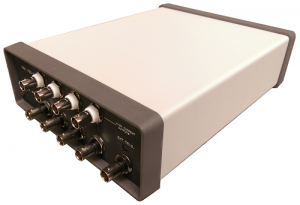 The PSG-3 is a four channel pulse/delay generator used for controlling the timing of experiment parameters and can be used as an experiment master clock or externally triggered (or gated) by an external event. Pulse width, delay, repetition rate, and other timing parameters are controlled by a simple user interface. Communication is via Ethernet or USB 2.0 connection. API commands also available to allow the PSG-3 to be incorporated into a larger data acquisition system via either Ethernet or USB 2.0. For PSV, the PSG-3 is used to control the pulse width and delay timing of the RGB LED and camera acquisition.
The PSG-3 is a four channel pulse/delay generator used for controlling the timing of experiment parameters and can be used as an experiment master clock or externally triggered (or gated) by an external event. Pulse width, delay, repetition rate, and other timing parameters are controlled by a simple user interface. Communication is via Ethernet or USB 2.0 connection. API commands also available to allow the PSG-3 to be incorporated into a larger data acquisition system via either Ethernet or USB 2.0. For PSV, the PSG-3 is used to control the pulse width and delay timing of the RGB LED and camera acquisition.
3-Color RGB LED Light Source
(Product ID: LM2X-DMHP-RGB)
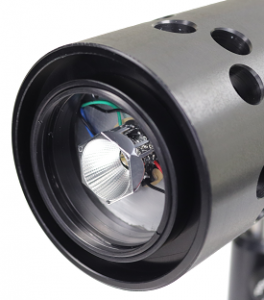 The LM2X-DMHP-RGB is an LED light source that provides 3 color (Red, Green, and Blue) outputs from its LED head. This LED is used for Particle Shadow Velocimetry (PSV) to illuminate small seed particles in a flow field to measure velocity and particle density. The LM2X-DMHP-RGB has 3 BNC inputs to control the timing and pulse width of each of the output colors from an external pulse generator. The pulsed LED operation is controlled by applying a TTL voltage to the external BNC(s) on the module. The rise time is less than 200-ns and the fall time is less than 100-ns and the duty cycle is 5%. The light distribution from the unit is approximately Gaussian for distance greater than 18 inches from the source.
The LM2X-DMHP-RGB is an LED light source that provides 3 color (Red, Green, and Blue) outputs from its LED head. This LED is used for Particle Shadow Velocimetry (PSV) to illuminate small seed particles in a flow field to measure velocity and particle density. The LM2X-DMHP-RGB has 3 BNC inputs to control the timing and pulse width of each of the output colors from an external pulse generator. The pulsed LED operation is controlled by applying a TTL voltage to the external BNC(s) on the module. The rise time is less than 200-ns and the fall time is less than 100-ns and the duty cycle is 5%. The light distribution from the unit is approximately Gaussian for distance greater than 18 inches from the source.
EF Lens Controller
(Product ID: LC-2)
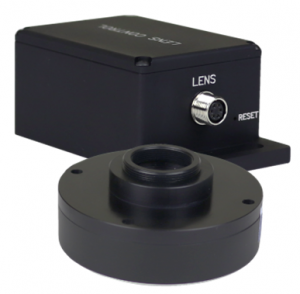 The EF lens controller is designed to operate Canon® EF, EF-S and L series IS auto focus lenses as well as Sigma® and Tamron® EF lenses. The lens controller makes it possible to operate these lenses on non-Canon® cameras. The LC-2 gives precise control of lens focus and iris for sensitive optical systems like particle shadow velocimetry. Preset positions can be saved and precisely recalled to move to specific focal planes in the experiement. Its Ethernet connection makes communication simple and also allows it to be operated over long distances or via a network connection. The LC-2 control can also be written into existing software for both Windows and Linux via API commands.
The EF lens controller is designed to operate Canon® EF, EF-S and L series IS auto focus lenses as well as Sigma® and Tamron® EF lenses. The lens controller makes it possible to operate these lenses on non-Canon® cameras. The LC-2 gives precise control of lens focus and iris for sensitive optical systems like particle shadow velocimetry. Preset positions can be saved and precisely recalled to move to specific focal planes in the experiement. Its Ethernet connection makes communication simple and also allows it to be operated over long distances or via a network connection. The LC-2 control can also be written into existing software for both Windows and Linux via API commands.
Optics
Between the camera and the lens, extension rings are used to move the lens away from the CCD sensor of the camera. This will reduce the amount of light coming into the camera, thus narrowing the depth of field. Ideally, the depth of field for PSV is 0.5 to 1.0 mm. This is done so that a sheet of particles is imaged, blurring out all out of plane particles so that the velocity vectors obtained are only in 2-dimensions. A similar technique is used in Particle Image Velocimetry (PIV), except a laser is used in place of an LED to illuminate particles. The extension rings will also shrink the field of view of the camera.
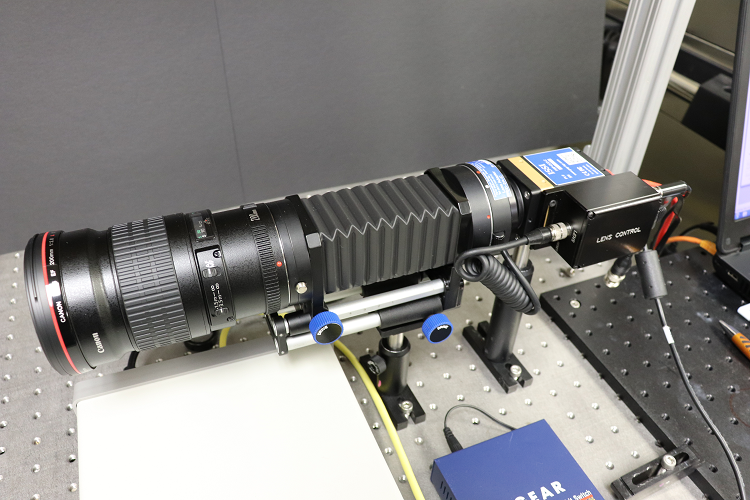
PSV Users

PSV System hardware in operation at Virgina Tech’s water tunnel: PSV in Water Tunnel
Example Data


Downloads
For ordering information please contact our sales department: [email protected] or call us at (937) 630-3012
For technical support, please contact our support department: [email protected] or call us at (937) 630-3012
